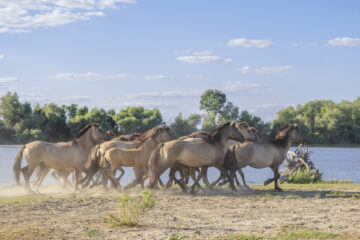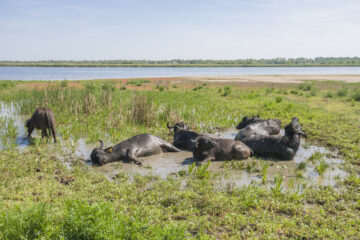For many years a network of dykes and canals have choked the life out of the Danube Delta. Rewilding efforts in the Ukrainian part of the delta are now restoring water flow, enhancing wildlife populations and benefitting local communities.
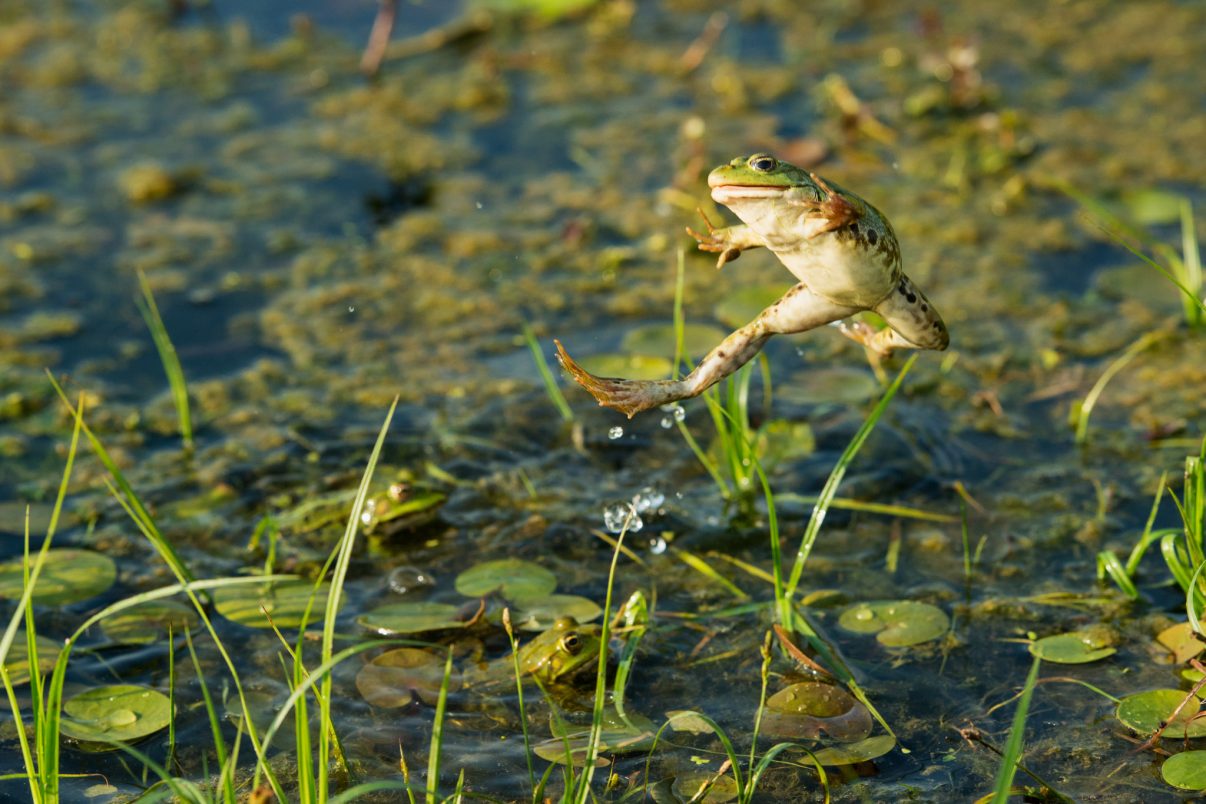
Breaking barriers
The 600,000-hectare Danube Delta is a complex, ever-shifting mosaic of channels, islands, forest, marshes and reedbeds that collectively represent Europe’s greatest natural wetland. Yet large-scale hydroengineering work carried out in the twentieth century – which primarily involved the creation of an extensive network of canals and dykes – has had a hugely negative impact on nature here, altering natural water flow and sedimentation patterns, and diminishing the ability of the delta to retain nutrients. This, in turn, has seen many water bodies stagnate, fish numbers plummet, and populations of other wildlife decline, adversely affecting many local economies.
Rewilding efforts in the Danube Delta, which scaled up at the start of 2019 with the start of an Endangered Landscapes Programme-funded initiative, are now breathing new life into the area’s lakes and communities by restoring connectivity and water flow. Such efforts are typified by a programme of restoration work being carried out by the Rewilding Ukraine team in late 2021 and early 2022, on Ermakov Island, in the area around Lake Katlabuh, and also on Lake Kartal. It follows earlier restoration work carried out on Lake Kartal in the summer of 2020.
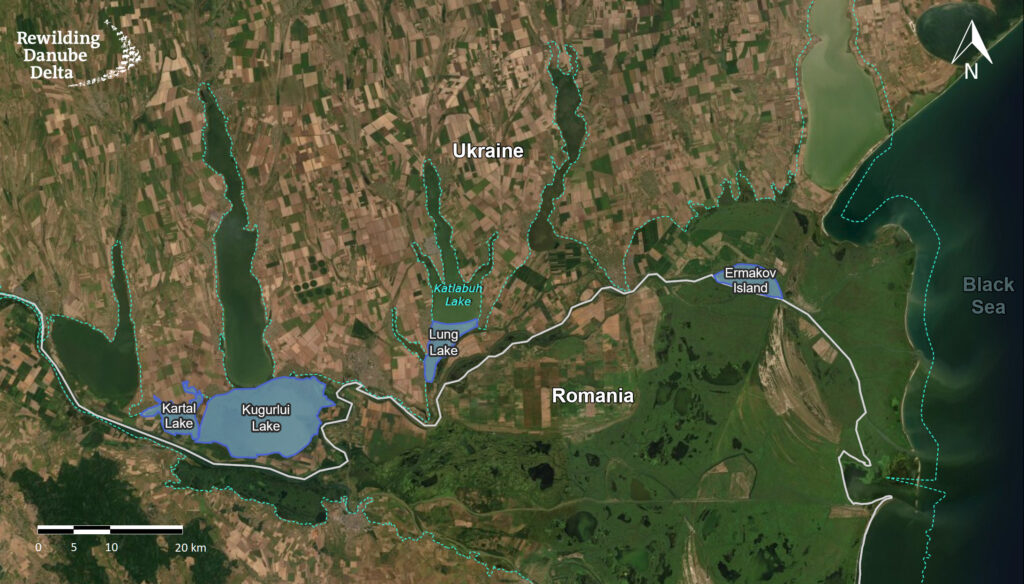
A vibrant rewilding showcase
Restoration of the 3500-hectare Ermakov Island – one of the largest islands in the Ukrainian Danube Delta – began back in 2009 (as part of a WWF initiative), when 300 metres of dykes that surround the island were first breached, reconnecting the island’s barren interior with the life force of the Danube’s seasonal flooding. This has led to widespread nature recovery and seen the island rapidly become one of the most biodiverse parts of the delta.
Last November, the Rewilding Ukraine team oversaw the complete removal of 200 metres of dyke on Ermakov Island, with the remaining 100 metres scheduled for removal in the spring. This work will help to completely naturalise water flow in and around the island.
To enhance Ermakov Island’s biodiversity further, and to boost its tourism appeal, Rewilding Ukraine has also reintroduced water buffalo, Konik horses, red deer and fallow deer here in recent years. A fantastically sited new photographic hide has also been constructed.
Damaging decline
The 68 square-kilometre Lake Katlabuh, which is located upriver from Ermakov island, is one of many “limans” found in the Danube Delta. These lakes and marshes form in river deltas and are typically separated from open or fast-flowing water by barriers or spits of land (although they remain connected to the main river channel).
Before the 1960s the water regime of Lake Katlabuh was completely natural, based on exchange with the River Danube and the run-off of several small rivers. At that point, the lake was home to a wide range of fish species and thriving populations of birds, including rare species such as the pygmy cormorant, glossy ibis, squacco heron and white-tailed eagle. Then a dyke and a series of sluices were constructed, effectively isolating the lake and turning it into a reservoir. Over the year the level of water dropped, the water gradually stagnated, and fish productivity and biodiversity both markedly declined.
The road to recovery
The Rewilding Ukraine team are now engaged in work to reconnect Lake Katlabuh with the Danube and surrounding area. The Lake Lung system – a smaller, transit lake and reedbed system that lies between River Danube and Lake Katlabuh – has already been connected to the main river channel by the reopening of the Hromadsky Canal, enabling some water exchange.
The next phase of the restoration, due to be carried out in the spring, will improve the connectivity of the Lung Lake with Katlabuh itself, which will also involve construction of a small bridge for local transport. This will see the system – which is essentially a vast marsh – increasingly function as a biofilter, removing sediment and excessive nutrients from the water.
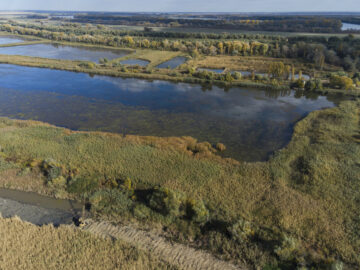
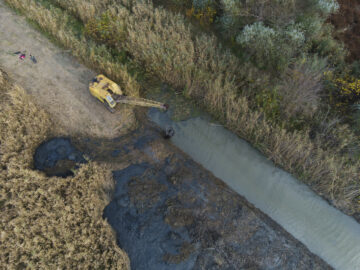
Community benefits
The communities around Lake Katlabuh have been calling for water exchange to be improved for some time.
“Restoring connectivity will guarantee some water flows in and out of Lake Katlabuh all the time,” explains Rewilding Ukraine Executive Director Mykhailo Nesterenko. “The lake was completely blocked in 2019 and 2020, resulting in severe drought, increasing salinity, and a water crisis in surrounding villages.
“Improved water exchange will make the lake water less salty, which means it can be used for irrigation.”
Enabling constant water flow between Katlabuh and the Danube will also increase the diversity of fish species in the lake, improving the spawning conditions for indigenous fish species. This, in turn, should help local fishermen, as well as enhancing biodiversity.
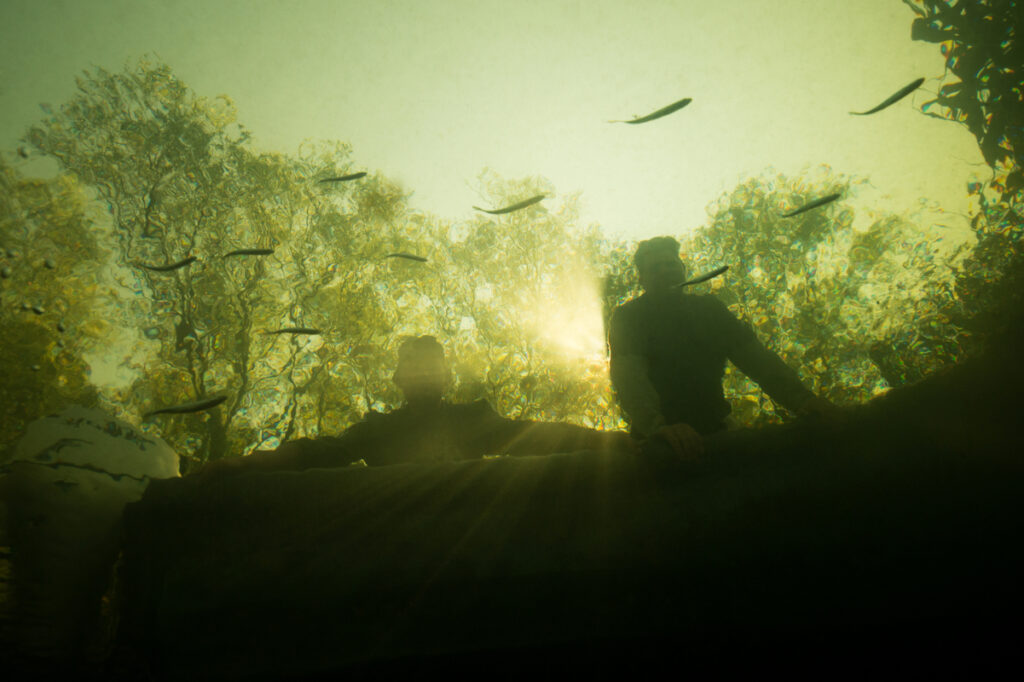
More work on Kartal
Back in 2020, restoration work carried out on Lake Kartal (located further upstream from Lake Katlabuh), reconnected it with nearby Lake Kugurluy and Lake Kagul, and with the Danube itself. Further work to boost connectivity was carried out by the Rewilding Ukraine team in late 2021, with the removal of a fish screen and sediment bar, boosting river flow into the lake from the Danube. In early spring another side arm of the Danube into the lake will be restored, further enhancing connectivity.
“We have already seen fish species migrating into Kartal from the Danube over the last year,” says Mykhailo Nesterenko. “Eventually the dynamics of all of these reconnected lakes should more or less follow the dynamics of the Danube itself. There will be periods of flooding and periods of drought – this is completely natural. A thriving, wilder Danube Delta shaped by natural processes is the ultimate objective here.”
The importance of wetland restoration
Around the world, wetlands such as the Danube Delta play a vital role supporting biodiversity. They also provide essential protection against climate change, floods, droughts and pollution, and are vital to human health and wellbeing. Celebrated today, the aim of World Wetlands Day is to raise global awareness of the vital importance of wetlands to people and planet, and of the need to rewild and restore those that have been degraded.

